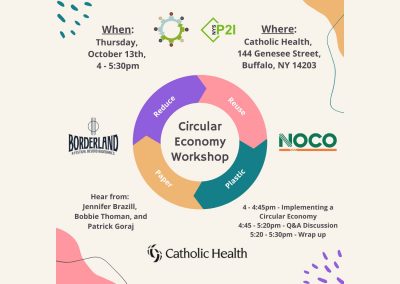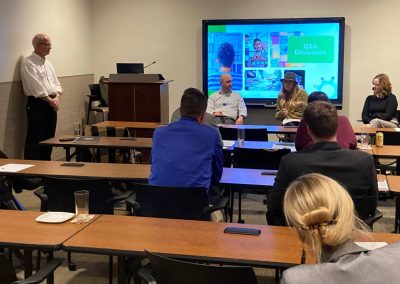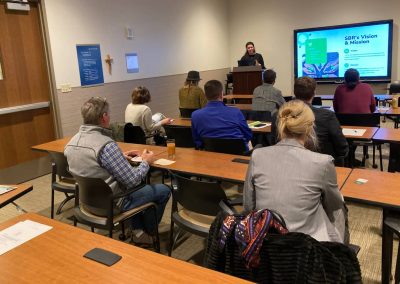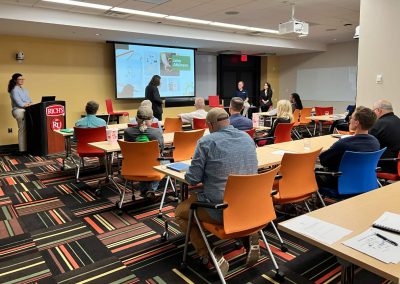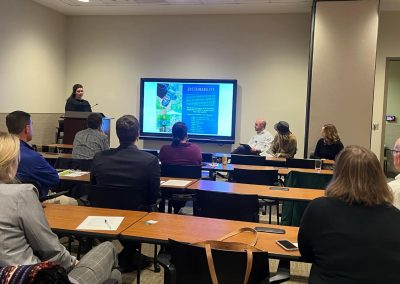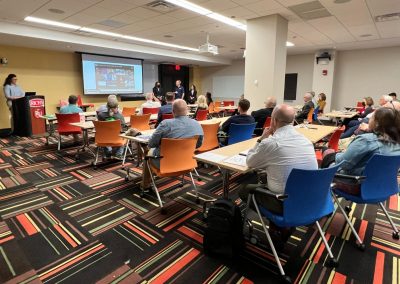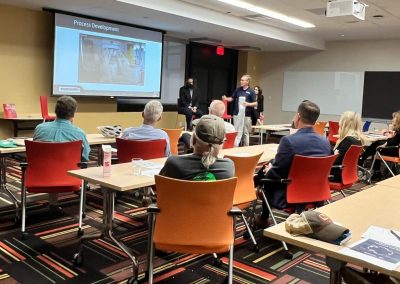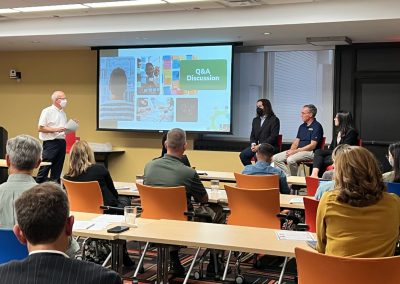A Business Case for Circular Economy
Reducing Paper and Plastic Pollution
Make a Donation
Become A Member
Reducing the use of single-use plastics within the workplace and emphasizing the concepts of a circular economy as applied to plastic and paper pollution. The Western New York Sustainable Business Roundtable partnered with the Erie County Department of Environment and Planning and Rich Products. Funding was provided by the Environmental Protection Fund as administered by the New York State Department of Environmental Conservation.
Project Goal & Objectives
This program targeted member businesses and the broader business community, with particular focus on purchasing officers or equivalent staff, in an educational semester focused on the principles of a circular economy and how that relates to plastics and paper pollution. We offered:
- An educational program that included an educational event on the principles of a circular economy and life cycle assessment (LCA).
- A workshop designed to help businesses make actionable steps to implement the circular economy into their business model.
- Educational materials that businesses can share internally about waste reduction with a focus on reducing plastics and paper pollution, circular economy, and LCA.
- A model Office Supply Purchasing Policy that supports responsible purchasing decisions for kitchen and office products.
- A case study from a local business working on making more responsible purchasing and use decisions for the workplaces.
Project Results
EDUCATIONAL MATERIALS
MODEL OFFICE SUPPLY PURCHASING POLICY
LOCAL BUSINESS CASE STUDY
Funding & Partners
Funding
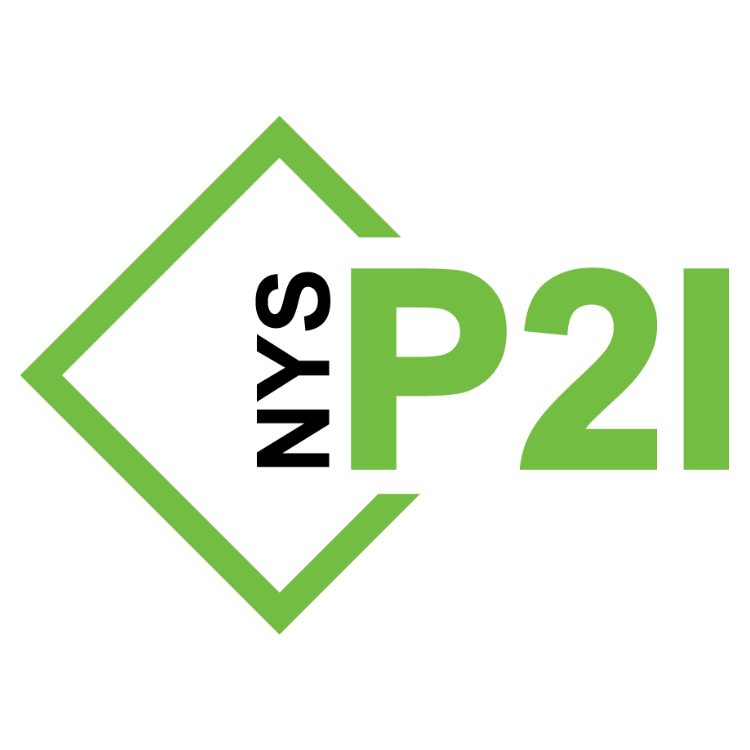
Partners
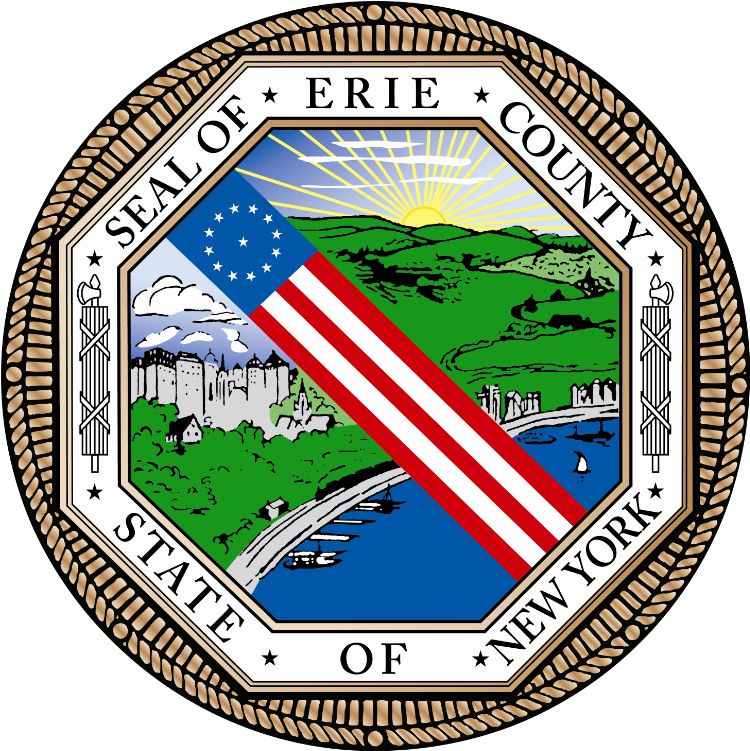
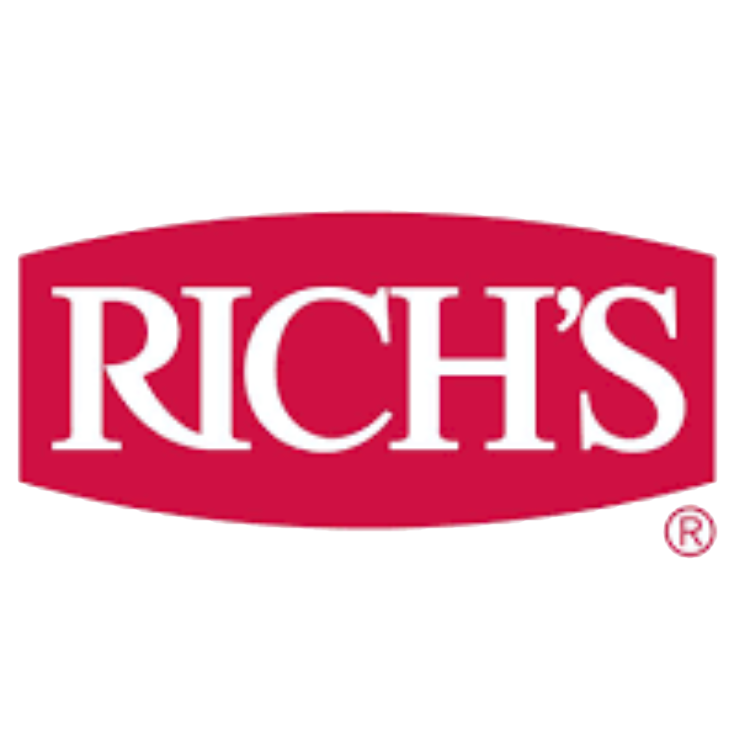
Any opinions, findings, and/or interpretations of data contained herein are the responsibility of the author(s) and do not necessarily represent the opinions, interpretations or policy of Rochester Institute of Technology and its NYS Pollution Prevention Institute or the State.

